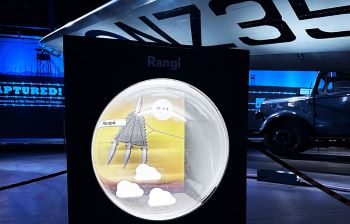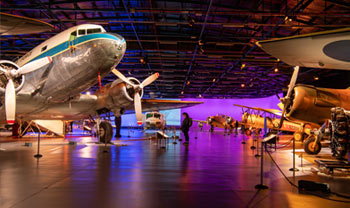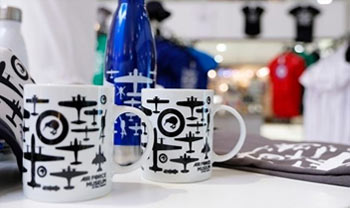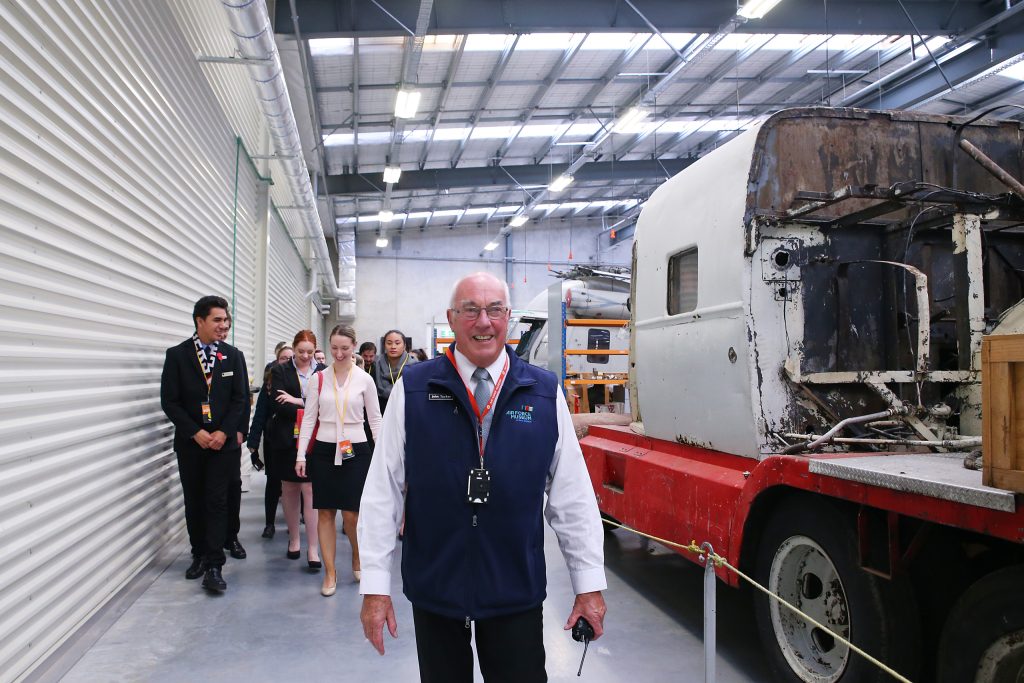Donate an item
Koha taonga mai
Why donate an item, and how do I do it?
We are always looking to develop our collection and are grateful for the opportunity to consider all offers of material related to New Zealand’s military aviation history.
Our Collection Management Policy defines the scope of what we collect, and we use the policy to assess the suitability of all items offered.
If you have an item or collection that you would like to donate, it is helpful if you can provide as much information as possible:
- What is the item(s) you would like to donate?
- Any known history, including personal stories and full names of any individuals associated with it.
- How you came to have the item. Are you legally entitled to donate it?
- Description of its physical condition.
- A digital image of the item(s).
These details help our Collections Team assess whether items fit within our collecting scope. If it is decided that the museum will accept the item(s), we will contact you about formalising the donation by completing the relevant documentation in accordance with our Collection Management Policy.
If you have any questions or want to find out more about donating collection items to the Air Force Museum, please contact:
The Registrar
Phone: 03 371 9600
Email: research@airforcemuseum.co.nz
If you have an item you would like to donate, please complete our donate an item form.
Frequently Asked Questions
Why donate an item to the museum?
When material is donated to the museum, it is preserved in accordance with museum best practice and housed securely. This means that it will be accessible for many generations to come.
What kind of material are you interested in collecting?
Broadly, we are interested in collecting material relating to New Zealand military aviation.
This spans the two New Zealand Flying Training Schools (1915 to 1921), the New Zealand Permanent Air Force and its territorial element (NZPAF and NZAF), the RNZAF from 1937 to present, historical enemy forces and associated civilian organisations (eg. Air Transport Auxiliary, International Red Cross etc).
Of particular significance are the ‘personal collections’ of men and women who have served in the Air Force, regardless of rank or trade or civilians who have made a significant contribution to the Air Force. The more complete the personal collection is, the better we can understand the service and history of the individual.
Within this broad collecting scope are areas of particular note we are interested in developing. These include:
- Women in service, either as part of the WAAF, WRNZAF or RNZAF
- Māori in military aviation service
- Material from the 1920s and 1930s relating to the New Zealand Permanent Air Force and New Zealand Territorial Air Force
- Post-World War Two activity, especially material relevant to the Malayan Emergency, Korean War and Vietnam War
- RNZAF contributions to peace keeping operations
- Items relevant to the contemporary history of the RNZAF
Why would a donated item be declined?
While we appreciate the opportunity to consider any item, we cannot guarantee it will be accepted. Developing our collection is a considered process and there are many reasons why an item may not be suitable. For example: it is not relevant to our collecting areas, we have examples already (duplication), poor condition, lack of provenance (ie. information about its background), it contains dangerous or hazardous substances such as radioactive material, explosives or asbestos, etc.
What happens if my donated item is declined?
If the item is declined, our Registrar will contact the donor to arrange a suitable time for them to pick up their item. A time for pick up needs to be arranged in advance to make sure the Registrar is available to meet with the donor.
Why do I have to fill out paperwork?
Donating an item involves formally transferring ownership to the museum, so it is important we have a clear record of who we received it from and their legal ability to give it to us. When an item is brought into the museum, we require an Article Receipt Form to be completed. This form confirms a donor’s legal ability to donate an item and records their contact details, a description of the item(s) for consideration, and any other information which helps our collections team assess the item.
If the item is accepted, our Registrar will contact the donor about completing an Article Donation Form. This form legally transfers ownership from the donor to the Museum Trust Board, therefore it is very important that it is completed correctly and fully. A copy of both forms are kept on file at the museum and duplicate copies will be given to the donor for their own records.
What will happen to items not suitable for the museum collection?
All items left at the museum for assessment are done so on the condition that if the museum does not require them for the collection the donor agrees to arrange their collection promptly. This is outlined in the Article Receipt Form that must be completed before leaving an item for assessment.
When can I see the Registrar about an item I want to donate?
The Registrar is available on an appointment basis during regular working hours – please call or email in advance to ensure they are free to meet you and have time to prepare any necessary paperwork.
Does the museum provide valuations or authenticate objects?
As a museum, we are bound by a code of ethics which prevents us from offering valuations, estimates of value or authentications of objects.
When will my item be displayed?
Unfortunately, we cannot guarantee if or when any items will be displayed in the museum galleries. Our collection is vast, and it is impossible for everything to be on display at any one time. Furthermore, it may be necessary to limit exposure for objects which are too fragile to be displayed long-term (eg. textiles and paper-based items). However, we do have rotating displays in a number of key parts of the museum, which enable us to put new material on display wherever possible. There is also potential for some objects to be displayed virtually as part of online exhibitions on our website, or on social media.
Why collect items if they’re not going to be displayed?
While we cannot promise donated items will be displayed, everything in our collection exists as an important resource for people researching many different aspects of New Zealand military aviation history. Our Collections Team offers a friendly and efficient research service and frequently make collections available to researchers, by appointment. We draw heavily from our own collection to develop the content for exhibitions and education programmes.
Can I (or my family) view items I have donated?
Absolutely – we welcome viewing of collection items, by appointment. We need time in advance to make sure staff members are available to retrieve objects from storage and assist you during your visit. If you’d like to make a time to view a collection, simply contact the Collections team on research@airforcemuseum.co.nz, or phone (03) 3719600.
Can I borrow back items I have donated?
Once objects have been donated, they become the legal property of the RNZAF Museum Trust Board. Part of the museum’s purpose is to ensure the long-term preservation and security of its collection items on behalf of all New Zealanders, so for these reason items cannot be borrowed by donors for personal use. However, you are welcome to view the items you have donated by making an appointment in advance with our Collections Team (see above).
What happens to my items after I donate them?
After an item has been accepted into the collection, it is accessioned (formally added) to the collection. It is given a unique accession number, catalogued on our collection database (recording details of the physical aspects of the object, materials and condition, as well as donor and other provenance information), cleaned (where required), photographed, then housed to museum standards. In some cases, it may be placed on public display.
How will my donated items be stored?
As the aim of any museum collection is to preserve artefacts for posterity, we work to internationally recognised museum standards and objects are carefully and securely housed in acid-free boxes or custom enclosures. Access to collection stores is strictly controlled to ensure long-term security and preservation of items.



